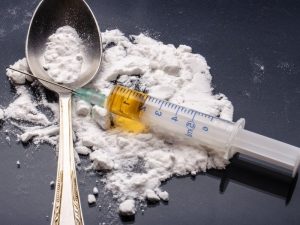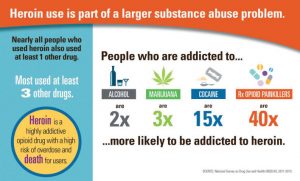 Till The Cows Come Home…This Ain’t Your Momma’s Farm Party
Till The Cows Come Home…This Ain’t Your Momma’s Farm Party
When young people talk about a “Pharm Party,” they are not talking about a sleepover in the pasture or at someone’s barn out on the family farm. Pharm Parties, also known as “Skittles Parties” or “Punch Bowl Parties” are making a comeback in popularity as prescription drugs are readily available and easily accessible from the family’s medicine cabinet.
Admission Required To Pharm Parties
Admission to Pharm Parties is typically required and is heavily influenced through peer pressure. You can’t get in unless you bring something with you to share. Attendees are typically required to bring prescription (preferred) or over the counter medications that are added to and mixed in a large bowl for everyone to be able to share. The term “Pharm” is short for pharmaceuticals, which can include any number of drugs like ADHD medications such as Aderall or Ritalin; strong tranquilizers like Xanax; even powerful painkillers like Vicodin or Oxycontin. Drugs like Zoloft, Prozac, Cialis, Wellbutrin and other commonly advertised drugs are added to the mix of pills collected and taken with varying amounts of alcohol at these drug induced parties.
 Lethal Trail Mix
Lethal Trail Mix
Party goers often refer to the potentially lethal concoction as “Trail Mix.” Trail Mix, usually served up in large bowls or baggies, is handed out to guests the same way someone would serve snacks and drinks at a cocktail party. The combination of alcohol with a variety of various, unknown drugs often leads to severe medical emergencies with dire consequences. When patients and medical professionals have no idea what exactly was ingested, the ability to treat common overdoses effectively becomes even more dangerous. Some treatments to try and reverse the effects of one type of drug may have a negative or even lethal effect being combined with other types of drugs that were ingested.
What Can You Do?
Unfortunately, pharm parties, skittles parties or punch bowl parties are not as rare as parents would hope. Directors of teen drug programs say that many teens admit to having participated in these types of parties on a regular basis. Hospitals are reporting higher than average numbers of teens admitted to the emergency room with cocktails of unknown medications and alcohol swirling in their bloodstream.. Despite years of urging families to rid themselves of hoarded prescription medications or to at least keep them under lock and key, kids are still finding the family medicine cabinet to be an easy source of all kinds of drugs – either from their own home or from family member’s or friend’s homes.
 Parental vigilance has never been more important. Parents should secure any and all prescriptions and over the counter medications that must be kept in the home. This includes their child’s ADHD medications which is widely sought after on the streets, in schools and at parties. Parents should periodically purge their medicine cabinet of unused prescription drugs. Contact your local pharmacy or law enforcement office to find out how to best dispose of unwanted medications. Keeping track of all medications including over-the-counter drugs that are being taken and/or stored in the home can help quickly identify problems.
Parental vigilance has never been more important. Parents should secure any and all prescriptions and over the counter medications that must be kept in the home. This includes their child’s ADHD medications which is widely sought after on the streets, in schools and at parties. Parents should periodically purge their medicine cabinet of unused prescription drugs. Contact your local pharmacy or law enforcement office to find out how to best dispose of unwanted medications. Keeping track of all medications including over-the-counter drugs that are being taken and/or stored in the home can help quickly identify problems.
Lastly, talk to your kids. Ask your child if they have ever heard of a pharm, skittles or punch bowl party and ask them to explain to you what it is. Talk about the dangers of prescription medications, mixing drugs with alcohol and the very real possibility of addiction or even death with the wrong combination.
If you believe that your child may be experimenting with drugs or alcohol, get them tested by a professional who can conduct an accurate test and provide you with support and guidance on how best to proceed in helping to educate and help your child. Drug and alcohol abuse are very real issues affecting our pre-teens, teens and young adults. Early intervention and assistance has proven to have the best chance at preventing lifelong addictive behaviors and problems.



 Q: Do you really want a heroin addict or “meth head” driving that forklift or entering your customer’s home or office?
Q: Do you really want a heroin addict or “meth head” driving that forklift or entering your customer’s home or office? stating that even though medicinal or recreational use of marijuana is legal in some states, the company still recognizes federal laws that identifies marijuana as an illegal drug and does not condone or allow marijuana use by its employees. The policy further states that positive test results for marijuana will result in disciplinary action. State Supreme Courts have already upheld the employer’s right to discipline an employee for a positive drug test for THC – even in states where marijuana is legal medically or recreationally.
stating that even though medicinal or recreational use of marijuana is legal in some states, the company still recognizes federal laws that identifies marijuana as an illegal drug and does not condone or allow marijuana use by its employees. The policy further states that positive test results for marijuana will result in disciplinary action. State Supreme Courts have already upheld the employer’s right to discipline an employee for a positive drug test for THC – even in states where marijuana is legal medically or recreationally. The second option some companies are choosing is to remove marijuana (THC) from their current drug test panels for pre-employment and random drug testing. They are, however, keeping marijuana (THC) in the drug test panels for post accident testing and reasonable suspicion testing – using oral saliva as the specimen instead of urine. Oral saliva testing in addition to instant alcohol tests for post accident or reasonable suspicion situations is quickly gaining in popularity. Testing, combined with supervisory observations, seek to provide evidence of impairment at the time of the incident or observation. Oral saliva testing is used because, unlike other specimen types, it can detect immediate recent use of drugs and can only detect up to approximately 72 hours.
The second option some companies are choosing is to remove marijuana (THC) from their current drug test panels for pre-employment and random drug testing. They are, however, keeping marijuana (THC) in the drug test panels for post accident testing and reasonable suspicion testing – using oral saliva as the specimen instead of urine. Oral saliva testing in addition to instant alcohol tests for post accident or reasonable suspicion situations is quickly gaining in popularity. Testing, combined with supervisory observations, seek to provide evidence of impairment at the time of the incident or observation. Oral saliva testing is used because, unlike other specimen types, it can detect immediate recent use of drugs and can only detect up to approximately 72 hours.
 Companies drug test for various reasons – the most common reasons are to:
Companies drug test for various reasons – the most common reasons are to:
 Discrimination Claims
Discrimination Claims

 When teens drink, they are typically binge drinking 90 percent of the time. While binge drinking, teens are more likely to engage in risky sexual behavior, are at an increased risk for physical and sexual assault, are most likely to use an illicit drug and can suffer from alcohol poisoning.
When teens drink, they are typically binge drinking 90 percent of the time. While binge drinking, teens are more likely to engage in risky sexual behavior, are at an increased risk for physical and sexual assault, are most likely to use an illicit drug and can suffer from alcohol poisoning. For example, you can ask your kids what they hear at school about alcohol or if any of their friends drink or talk about drinking at parties. If you’re watching television or a movie and underage or irresponsible drinking is shown, use that as a conversation starter by asking your kids what they think about it. If what’s shown is an unhealthy drinking behavior, take the opportunity to explain how the behavior is unhealthy and what the risks are.
For example, you can ask your kids what they hear at school about alcohol or if any of their friends drink or talk about drinking at parties. If you’re watching television or a movie and underage or irresponsible drinking is shown, use that as a conversation starter by asking your kids what they think about it. If what’s shown is an unhealthy drinking behavior, take the opportunity to explain how the behavior is unhealthy and what the risks are. Talk about the consequences of drug and alcohol use – not only the consequences in your home, but also about the legal and medical consequences that can occur such as being arrested or hospitalized. Be clear about what you will do if the rules are broken and more importantly, follow through on these consequences.
Talk about the consequences of drug and alcohol use – not only the consequences in your home, but also about the legal and medical consequences that can occur such as being arrested or hospitalized. Be clear about what you will do if the rules are broken and more importantly, follow through on these consequences.
 Youth overdose deaths during the same have quadrupled in Kansas, Montana, Ohio, Wisconsin and Wyoming. West Virginia has the highest drug overdose death rate in America today with over 12 overdose deaths per 100,000 youths.
Youth overdose deaths during the same have quadrupled in Kansas, Montana, Ohio, Wisconsin and Wyoming. West Virginia has the highest drug overdose death rate in America today with over 12 overdose deaths per 100,000 youths.
 Recent studies show that 57 percent of fatal car crashes involve a driver who tests positive for alcohol or drugs. We all know that driving a car under the influence puts the driver and others around them at higher risk for accidents and injury. The same holds true when it comes to accidents in the workplace. On the road, in the office or on the job site – workplace accidents resulting in property damage or personal injury lead to added expense and liability exposure for the employer. Post accident testing, sometimes referred to as “post-incident” testing, can help determine if drugs or alcohol may have been a contributing factor leading to the incident.
Recent studies show that 57 percent of fatal car crashes involve a driver who tests positive for alcohol or drugs. We all know that driving a car under the influence puts the driver and others around them at higher risk for accidents and injury. The same holds true when it comes to accidents in the workplace. On the road, in the office or on the job site – workplace accidents resulting in property damage or personal injury lead to added expense and liability exposure for the employer. Post accident testing, sometimes referred to as “post-incident” testing, can help determine if drugs or alcohol may have been a contributing factor leading to the incident.
 The Testing
The Testing certified Breath Alcohol Technician (BAT) before final alcohol test results are recorded and delivered to the employer.
certified Breath Alcohol Technician (BAT) before final alcohol test results are recorded and delivered to the employer. in many drug policies that is employed by companies looking to establish a safe, secure and healthy environment for their employees, colleagues, customers and community. Reasonable suspicion simply means that there is reason to believe the employee is under the influence of drugs or alcohol while on the job. This belief or suspicion must be based on objective factors, such as the direct observation of an employee’s appearance, speech, behavior, odor or other conduct. Reasonable suspicion should not be based on hearsay or rumors and should not include behavior or conduct that is simply attributable to some type of common error. For example, dropping something on the floor, being late to work or being in a bad mood could have many explanations. While these actions may cause a good supervisor to pay closer attention to this particular employee, they do not rise to level of reasonable suspicion of drug or alcohol use. Closer observation may lead to other observations such as slurred speech, unsteady balance, dilated pupils, excessive perspiration, etc – all of which could lead to reasonable suspicion testing.
in many drug policies that is employed by companies looking to establish a safe, secure and healthy environment for their employees, colleagues, customers and community. Reasonable suspicion simply means that there is reason to believe the employee is under the influence of drugs or alcohol while on the job. This belief or suspicion must be based on objective factors, such as the direct observation of an employee’s appearance, speech, behavior, odor or other conduct. Reasonable suspicion should not be based on hearsay or rumors and should not include behavior or conduct that is simply attributable to some type of common error. For example, dropping something on the floor, being late to work or being in a bad mood could have many explanations. While these actions may cause a good supervisor to pay closer attention to this particular employee, they do not rise to level of reasonable suspicion of drug or alcohol use. Closer observation may lead to other observations such as slurred speech, unsteady balance, dilated pupils, excessive perspiration, etc – all of which could lead to reasonable suspicion testing. Professional training of supervisory staff is the best way to learn about reasonable suspicion testing. In some industries, such as DOT regulated companies, supervisor training is required. Training should teach supervisors about the types of drugs that are tested for as well as the signs and symptoms indicating possible use of these substances. For instance, cocaine is a stimulant and makes everything in the body speed up. Those under the influence of cocaine may be hyper, have rapid movements, be talkative and have dilated or enlarged pupils. These are the types of signs a supervisor should be trained to look for as reasonable suspicion of the use of cocaine, or any other stimulant like meth or crack. In addition to learning more about the drugs and what to look for in the use of such drugs, supervisors should also be trained in what constitutes reasonable suspicion and how to properly identify and document direct observations. Supervisors who are not trained to identify and observe the signs of use associated with drug and alcohol may expose the company up to significant liability, discrimination claims and other legal issues.
Professional training of supervisory staff is the best way to learn about reasonable suspicion testing. In some industries, such as DOT regulated companies, supervisor training is required. Training should teach supervisors about the types of drugs that are tested for as well as the signs and symptoms indicating possible use of these substances. For instance, cocaine is a stimulant and makes everything in the body speed up. Those under the influence of cocaine may be hyper, have rapid movements, be talkative and have dilated or enlarged pupils. These are the types of signs a supervisor should be trained to look for as reasonable suspicion of the use of cocaine, or any other stimulant like meth or crack. In addition to learning more about the drugs and what to look for in the use of such drugs, supervisors should also be trained in what constitutes reasonable suspicion and how to properly identify and document direct observations. Supervisors who are not trained to identify and observe the signs of use associated with drug and alcohol may expose the company up to significant liability, discrimination claims and other legal issues. – either at the clinic location or having the collector come to the company site. In the case of drug tests, laboratory confirmation and medical review of the test results should be an absolute requirement to avoid any mistakes or erroneous results. For alcohol tests, a confirmation test of alcohol levels should be conducted by a certified Breath Alcohol Technician for complete and accurate results. All positive results should be submitted to the employee in writing within 24 hours of receiving the results. A reasonable suspicion situation requires careful handling of documentation, personnel records and potentially sensitive test results. All employees having access to this information have a legal responsibility to maintain the strictest and highest standards of confidentiality throughout the entire process.
– either at the clinic location or having the collector come to the company site. In the case of drug tests, laboratory confirmation and medical review of the test results should be an absolute requirement to avoid any mistakes or erroneous results. For alcohol tests, a confirmation test of alcohol levels should be conducted by a certified Breath Alcohol Technician for complete and accurate results. All positive results should be submitted to the employee in writing within 24 hours of receiving the results. A reasonable suspicion situation requires careful handling of documentation, personnel records and potentially sensitive test results. All employees having access to this information have a legal responsibility to maintain the strictest and highest standards of confidentiality throughout the entire process.
 program and selection process is a great option for companies. It protects the company from any claims of impropriety, discrimination or targeting by a disgruntled employee in that the company has absolutely no control over the process or actual selections. Companies like
program and selection process is a great option for companies. It protects the company from any claims of impropriety, discrimination or targeting by a disgruntled employee in that the company has absolutely no control over the process or actual selections. Companies like  Employees may be asked to report to a drug and alcohol testing clinic or there may be a collector that comes to the company to perform the collection on site.
Employees may be asked to report to a drug and alcohol testing clinic or there may be a collector that comes to the company to perform the collection on site. Drug Test For Children | ChildGuard®
Drug Test For Children | ChildGuard®

